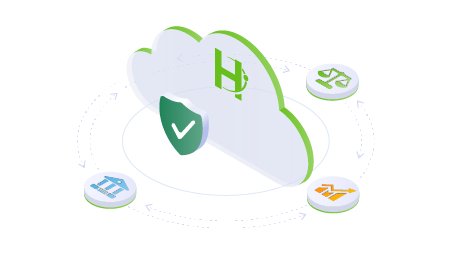Federal agencies are awash in data that is essential to their missions and to serving citizens. Yet, few know where all their data resides and even fewer can correctly identify just how much data they have. According to Sean Phuphanich, senior solutions architect at Amazon Web Services (AWS) Worldwide Public Sector, initial agency data estimates are almost always less than the actual amount of terabytes or petabytes an agency has due to data sprawl and fragmentation. Significant amounts of their data sits in silos or distributed environments in the cloud, making it difficult to access when needed. For many agencies, their missions require them to maintain on-premise data centers. And a common thread that runs through all of this is that the costs of storing, managing, and scaling data — along with ensuring high availability and business continuity — are rising.
The good news is that data management as a service (DMaaS), a collaboration between Cohesity and Amazon Web Services (AWS), offers the power and scalability of the cloud, and the potential for agencies to tame data sprawl and mass data fragmentation while recalibrating operations and maintenance (O&E) and development, modernization, and enhancement (DME) spending.
Recalibrate O&M and DME
The current state of IT across almost all federal agencies and organizations is that O&M procurement far overshadows that of DME. The most recent figures on DME and O&M spending indicate that O&M spending was 78% of the total federal budget for IT.
A significant portion of the government’s IT O&M budget is devoted to maintaining and operating data centers. The volume of data that citizens and agencies generate each year is so high that terms like zettabytes and yottabytes have entered the data lexicon. As a consequence, CapEx for on-premises data centers, infrastructure, management systems, data protection, and disaster recovery quickly consumes IT budgets. These investments are problematic because they require thinking about the future capacity needed to address data growth, sprawl, and management. Often, agency hardware, data centers, and infrastructure sit idle because they aren’t needed or they are awaiting a predicted jump in data generation that could be off the mark.
Cohesity DMaaS offerings are managed by Cohesity and hosted on AWS. Together, Cohesity and AWS can move large volumes of data that currently live on expensive platforms onto AWS’s lower-cost commodity storage offerings. The aim is to simplify the way data is backed up, secured, governed, and analyzed.
An easy-to-use portfolio of SaaS solutions offers agencies the vision of reducing infrastructure burden and trading CapEx for OpEx. Federal agencies will be able to plan more realistically and efficiently. Rather than buying storage and hardware 5 or 10 years in advance, they can focus on immediate needs, with the scalable capacity to grow when the time comes, paying as they go. That helps agencies save money, and it gives them the ability to start adopting and utilizing the powerful tools that are available in the cloud. Freed of O&M costs, they can increase DME spending that supports the development of innovative, digital solutions and products that enable their missions and enhance their services.
Implement a Holistic Refresh to Replace a Mixed Bag of Solutions
In an effort to tame data sprawl and conquer technical debt, departments and agencies have historically used point solutions, but these have generally proven to be cumbersome. They are also costly and labor intensive. Too often, these piecemeal fixes don’t even address the fundamental needs of the situation nor can they interoperate because they were developed to solve a specific problem. Basically, they are a mixed bag of solutions in a traditional infrastructure, and things are not rationalized effectively. There is a lot of duplication and a real lack of transparency.
The goal of DMaaS is to offer not only a way out of point solutions but also a way forward. Agencies will have the chance to implement a holistic refresh. Rather than trying to make a collection of fixes work together, agencies can re-architect their overall service thinking with a platform that focuses on performance, scale, and security. Then they are positioned for agility, easily responding to citizens, constituents, and other agencies.
Because DMaaS is a portfolio of SaaS offerings hosted on a cloud platform, it can provide a safe and easy way for agencies to store data and then expand how it is used with artificial intelligence, machine learning, and analytics. Another major benefit is that because the point solution system is gone, public sector organizations can make the best use of their limited resources. Rather than struggling to find the skillsets they need to support complicated deployments, they can invest in encouraging innovation among their current IT teams.
Reinvigorate Data Security and Recovery
Not only has the amount of data that agencies collect increased, but so has its footprint. And there are holes in this footprint that present a serious challenge to keeping it both safe and recoverable. With millions of employees working from home, data can live in so many more places — often out of agency control. Unstructured data with disparate policies that are inconsistently implemented create an attack surface that is attractive to ransomware and cybersecurity criminals. The difficult task for agency IT teams is protecting this new, exposed attack surface. Hand-in-hand with the new security challenges is the question of recovery from not only attacks that were successful, but natural disasters or network failures.
Current agency data protection, backup, and recovery is likely a combination of different software solutions for different data sources, plus media servers, tape libraries, and target storage all put together in a patchworked solution to operate and manage. And that old-school model is time-consuming, error-prone, and costly. Each software solution is likely owned and sold by a different vendor. When backup is the last line of defense against cybercriminals, having everything work together between your backup and security products is a challenge.
One of the DMaaS offerings is backup as a service. It reinvigorates data protection and recovery by unifying backup from a variety of data sources whether in the data center, cloud, or at the edge with a single platform and user interface. It enables agencies to protect and consolidate backup data securely and efficiently, all in one place. DMaaS also offers the opportunity to develop a truly resilient and connected architecture in support of the convergence of backup and cybersecurity solutions. Work is underway for FedRamp certification for DMaaS, ensuring public sector end users will have maximum security and flexibility when leveraging Cohesity within the broader ecosystem of AWS service offerings.
Choose the Model that Works Best for Tackling Mass Data Fragmentation
Because federal agencies have different needs, they should not be expected to adopt a one-size-fits-all data management model. Therefore, with DMaaS, AWS and Cohesity have built a software-defined platform to tackle the mass data fragmentation problem several ways. Cohesity provides data protection, backup, disaster recovery, data security, and data governance and agencies can run applications on top of that data using cloud services from AWS and others.
With Cohesity, agencies can choose self-managed software or SaaS (DMaaS). They can centralize data, work within a common data fabric, and achieve data mobility. No matter which model they select, the result is a leaner footprint, reduced costs, and the opportunity to put that data to practical use. It is a powerful, cloud-based data management solution that enables you to protect, secure, govern, and analyze data.
Getting Ready for DMaaS
Agencies can take the following steps today to set themselves up for future success with DMaaS:
- Map out current data management tools and services, whether on-premises or the cloud.
- Consider how to standardize and look for opportunities for consolidation by taking stock early of how data is consumed across the organization.
- Evaluate DMaaS products and services with an eye toward specific benefits, whether that’s cost savings, security and compliance, or just being able to scale faster.
- Put together a picture of what is presently available and where the gaps may exist.
- Develop an actionable transformation strategy or roadmap that serves as a guide for a journey toward improved data management, enhanced security, and ultimately more robust and effective uses of data across the public sector mission set.
To learn more, visit our federal DMaaS solutions page.















